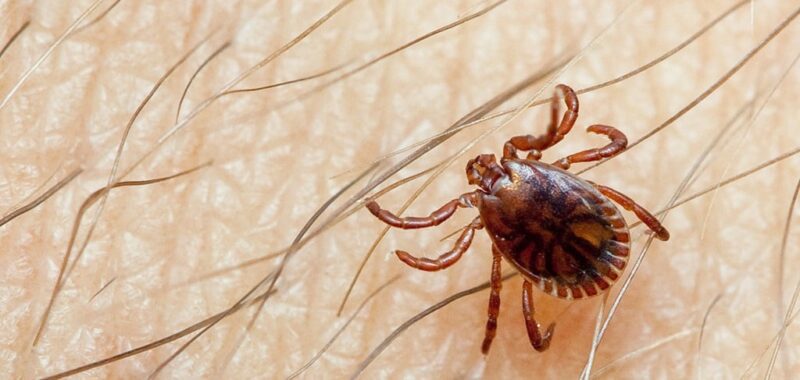Global Issues
CCHF: A Deadly Virus on Rampage for Human Lives -By Caleb Onah
Personal protective measures are needed to reduce the risk of tick bites, including using tick repellents like DEET, wearing protective clothing to minimise skin exposure, performing regular self-checks for ticks, and proper tick removal. Abandoned agricultural areas, which serve as habitats for virus hosts like hares, require special attention.

The World Health Organisation (WHO) has identified Crimean-Congo Haemorrhagic Fever (CCHF) as a significant threat to human health and live. This virus is primarily spread through ticks and is caused by Nairovirus, a group of tick-borne bunyaviruses commonly found in livestock. The fatality rate of CCHF ranges between 10 and 40 percent.
According to WHO, the CCHF virus can be transmitted to humans through tick bites or contact with infected animal blood or tissues during and immediately after slaughter. Individuals involved in the livestock industry, such as agricultural workers, slaughterhouse workers, and veterinarians, are most susceptible to contracting the disease.
Furthermore, the virus can also spread from person to person through close contact with infected bodily fluids, such as blood, secretions, or organs.
Improper sterilisation of medical equipment, needle reuse, and contamination of medical supplies can lead to hospital-acquired infections. Pregnant women rarely experience CCHF cases, but when infected, both maternal and fetal mortality risks are high.
Nosocomial transmission, or infections acquired in healthcare settings, has been reported in this group. The factors contributing to the acquisition of CCHFV infection vary among countries. From an epidemiological standpoint, CCHF is the most widespread viral tick-transmitted haemorrhagic fever.
Globally, an estimated three billion people are at risk of infection, with 10,000 to 15,000 cases occurring each year, resulting in 500 fatalities. CCHF cases have been reported in over 30 countries in Africa, Asia, and Europe, particularly in regions where Hyalomma spp.
Various countries have observed nosocomial CCHF infections with significant mortality rates. Both wild and domestic animals act as hosts for CCHFV, supporting tick populations by providing blood meals.
Notable cases of CCHF have been reported in Iraq, Namibia, Spain, and Pakistan. In Iraq alone, thirteen deaths have occurred in 2023.
When these animals are viraemic, they can transmit the virus to ticks and humans. Additionally, they may transport ticks over long distances. CCHFV-specific antibodies have been detected in a range of wild and domestic animals, including livestock, horses, dogs, chickens, camels, ostriches, swine, hares, deer, buffalo, and rhinoceroses. However, in birds, antibodies have only been found in guinea fowl and ostriches.
Conducting seroprevalence studies in humans, wild animals, domestic animals, and screening ticks for CCHFV infection provides valuable information on virus circulation and identifies potential disease hotspots.
The disease, potentially exacerbated by climate change, is regarded as the most significant current threat to public health. Imported cases from endemic countries have also been documented, emphasising the need for healthcare professionals to carefully record a patient’s travel history. At a population level, the dissemination of information to residents and visitors in endemic areas is crucial for effective control.
Personal protective measures are needed to reduce the risk of tick bites, including using tick repellents like DEET, wearing protective clothing to minimise skin exposure, performing regular self-checks for ticks, and proper tick removal. Abandoned agricultural areas, which serve as habitats for virus hosts like hares, require special attention.
Groups at risk in endemic areas include individuals engaged in outdoor activities, farmers, animal breeders, veterinarians, people involved in informal slaughtering, hunters, and healthcare workers.
People in these high-risk groups are urged to adopt personal protective measures such as wearing appropriate clothing and using chemical tick repellents like permethrin or deltamethrin to prevent tick bites.




















